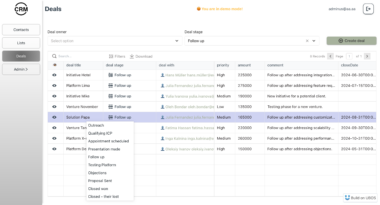MCP Notes Server
A Model Context Protocol (MCP) server implementation for managing notes with persistent storage.
Features
- Create, read, update, and delete notes
- Persistent storage using JSON
- Timestamp tracking for creation and modifications
- Note summarization via prompts
- Resource-based access using note:// URI scheme
Installation
Installing via Smithery
To install notes for Claude Desktop automatically via Smithery:
npx -y @smithery/cli install notes --client claude
Manual Installation
- Ensure you have Python 3.10 or later installed
- Create a virtual environment:
python -m venv .venv # On Unix/MacOS: source .venv/bin/activate # On Windows: .venvScriptsactivate - Install requirements:
pip install MCP
Project Structure
notes/
├── __init__.py # Package initialization
├── server.py # Main server implementation
├── storage.py # Note persistence layer
├── resources.py # Resource handling (note:// URIs)
├── prompts.py # LLM prompt generation
└── tools/ # Server tools
├── __init__.py # Tools package initialization
├── list_tools.py # Tool listing functionality
└── handle_tools.py # Tool handling implementation
Available Tools
add-note: Create a new notelist-all-notes: Display all stored notesupdate-note: Modify an existing notedelete-note: Remove a note
Usage
Start the server:
mcp install src/notes mcp start NotesExample operations:
# Create a note await client.call_tool("add-note", { "name": "example", "content": "This is a test note" }) # List all notes await client.call_tool("list-all-notes") # Update a note await client.call_tool("update-note", { "name": "example", "content": "Updated content" }) # Delete a note await client.call_tool("delete-note", { "name": "example" })
Storage
Notes are stored in notes_storage.json with the following structure:
{
"note_name": {
"content": "Note content",
"created_at": "2025-01-12T11:28:16.721704",
"modified_at": "2025-01-12T11:28:16.721704"
}
}
Resource Access
Notes can be accessed as resources using the note:// URI scheme:
- List resources: Returns all available notes as resources
- Read resource: Access a specific note using
note://internal/note_name
Prompt Generation
The server includes a prompt generation feature for note summarization:
- Supports both brief and detailed summaries
- Formats notes for language model input
- Available via the “summarize-notes” prompt
Development
To modify or extend the server:
- Clone the repository
- Install development dependencies
- Make changes in the appropriate module
- Test thoroughly before deploying
Testing
Tests should cover:
- Basic CRUD operations
- Multiple note handling
- Error cases
- Resource access
- Prompt generation
License
[Add your license here]
Notes Server
Project Details
- truaxki/mcp-notes
- MIT License
- Last Updated: 4/14/2025
Recomended MCP Servers
MCP Implementation for HubSpot

Query and Summarize your chat messages.

Chain of Draft (CoD) MCP Server: An MCP server implementation of the Chain of Draft reasoning approach for...
Let LLM help you achieve your regression with Stata.

This is an MCP (Model Context Protocol) Server for discovering and downloading 3D models

MCP server for executing CMD commands. Can be hooked to claude for additional agentics.
为 Cursor、Windsurf、Cline 和其他 AI 驱动的编码工具提供访问飞书文档的能力,基于 Model Context Protocol 服务器实现。

Sensei MCP is a Model Context Protocol (MCP) server that provides expert guidance for Dojo and Cairo development...
SketchUp-MCP For AI

Model Context Protocol (MCP) server for constraint optimization and solving"
 From vibe coding to vibe deployment. UBOS MCP turns ideas into infra with one message.
From vibe coding to vibe deployment. UBOS MCP turns ideas into infra with one message.






